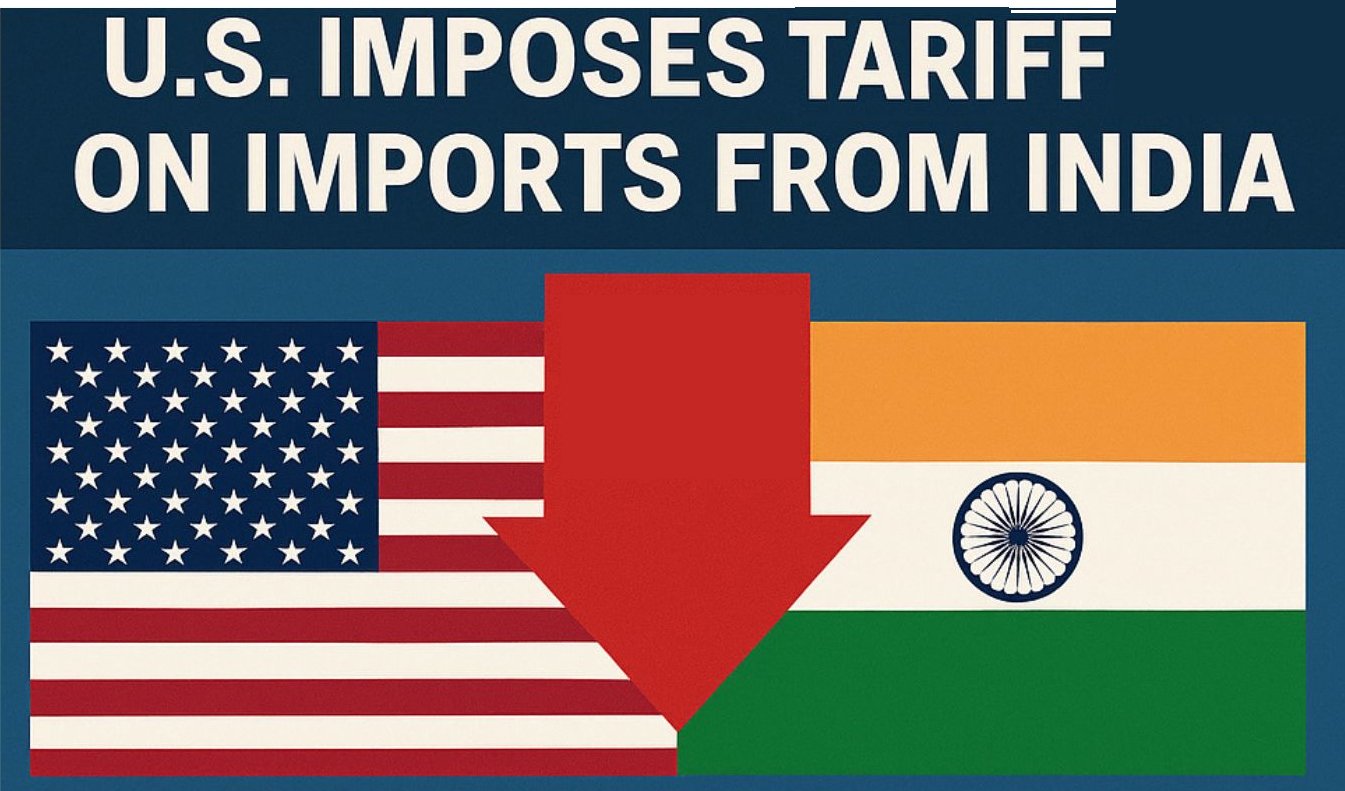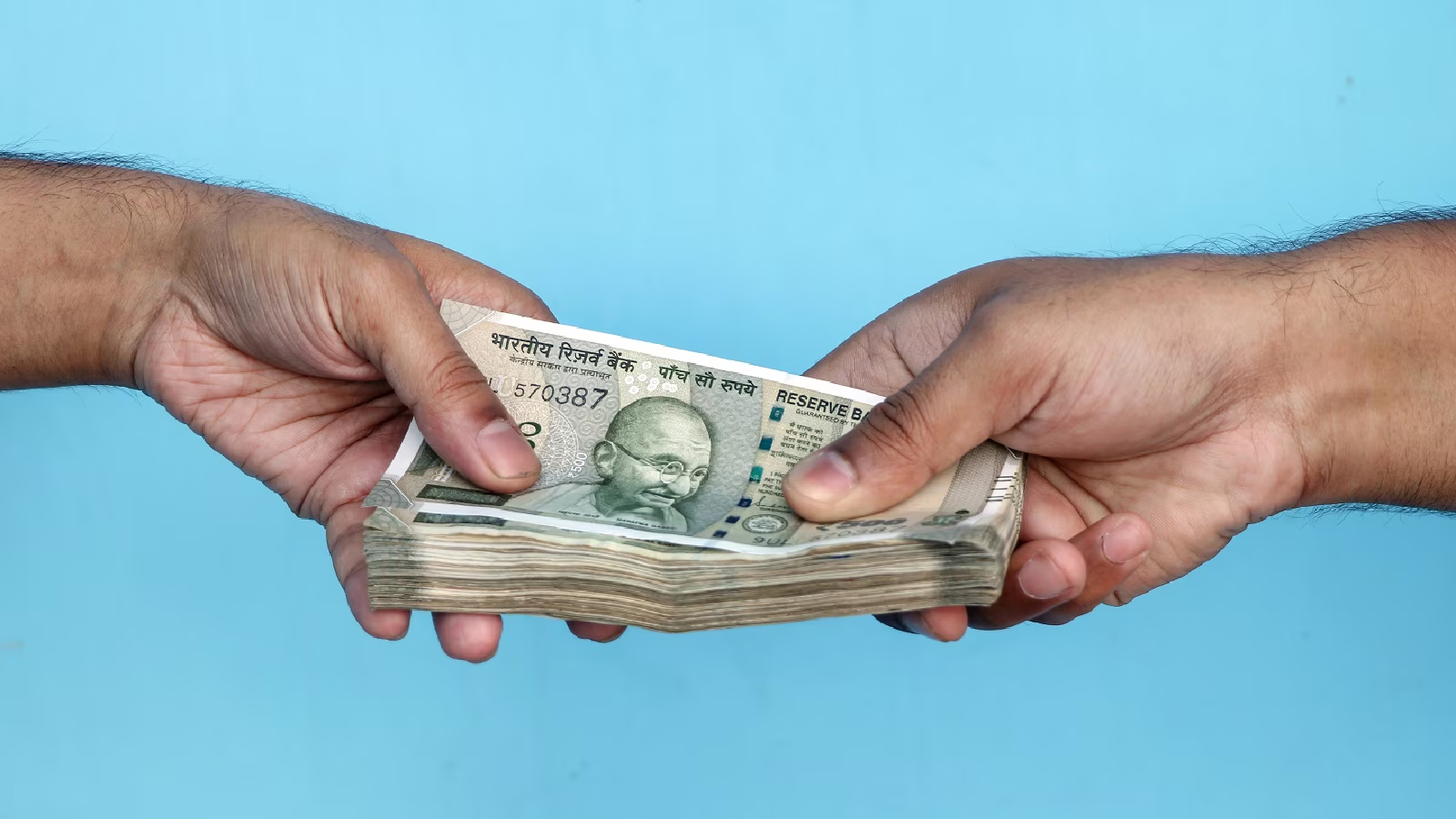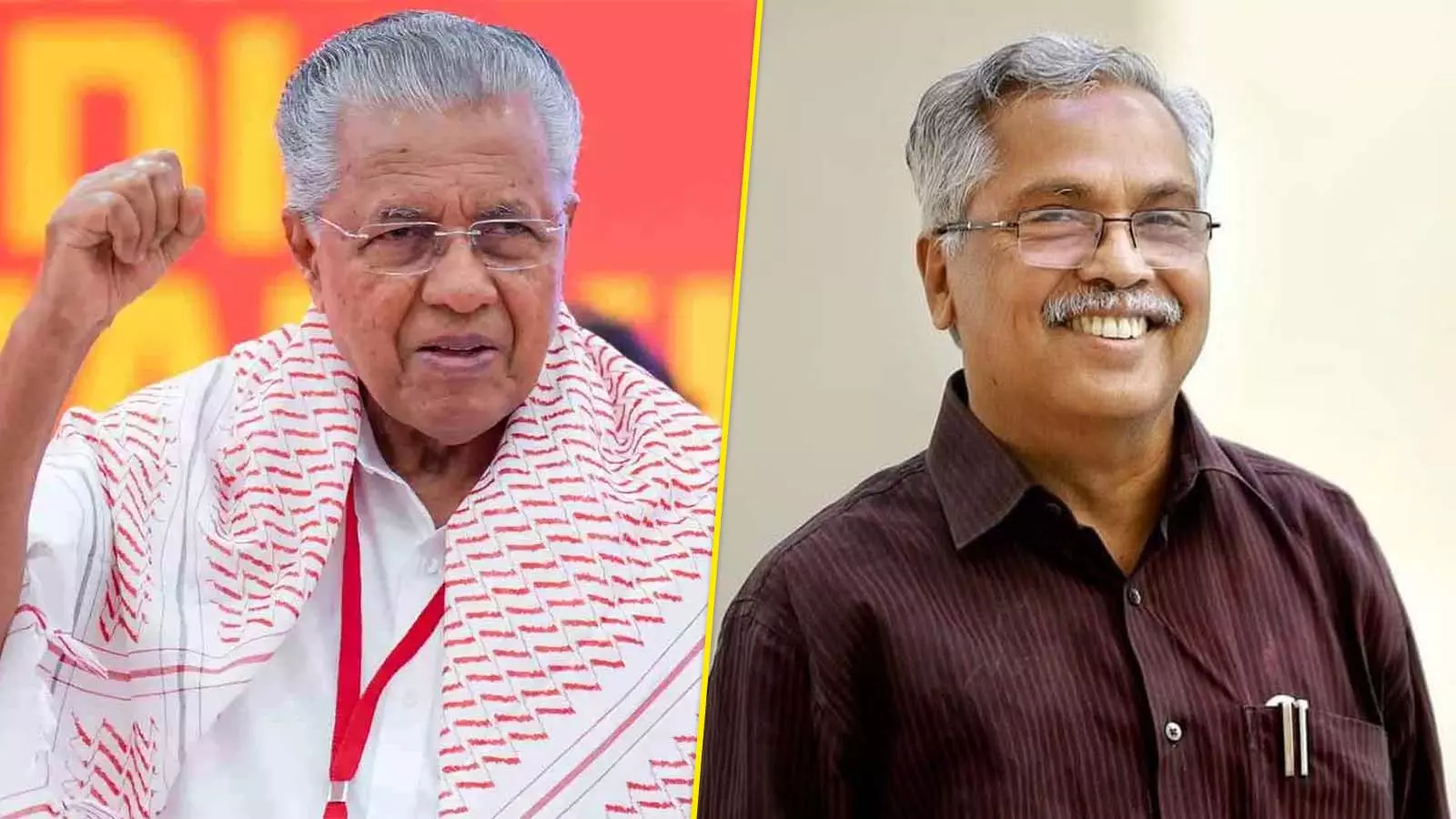Why in the News?
- In August 2025, the United States imposed an additional 25% tariff on imports from India, citing trade deficits, India’s purchase of Russian crude, and retaliatory precedents.
- While India responded with measured diplomacy and no public retaliation, the development exposed deeper structural imbalances in India’s export economy, especially the neglect of the northeast region.
Key Highlights
- Imposition of US Tariffs and India’s Response
- In August 2025, President Donald Trump announced additional 25% tariffs on Indian goods.
- India maintained its traditional stance of quiet diplomacy, avoiding open retaliation.
- However, this episode revealed internal vulnerabilities, not just bilateral trade disputes.
- Concentration of India’s Export Economy
- India’s export trade is heavily centralised in four States — Gujarat, Maharashtra, Tamil Nadu, and Karnataka, which together account for over 70% of total merchandise exports.
- Gujarat alone contributes 33%, highlighting over-dependence on a few hubs.
- In contrast, large and populous States like Uttar Pradesh, Bihar, and Madhya Pradesh contribute barely 5% of exports, showing the unequal spatial distribution of trade benefits.
- Marginalisation of the Northeast
- The northeast’s eight States, despite sharing 5,400 km of international borders, contribute only 13% of India’s exports.
- The region lacks operational trade corridors, logistical infrastructure, and institutional representation in national export policymaking.
- Policies like PLI (Production-Linked Incentives) and RoDTEP (Remission of Duties and Taxes on Exported Products) are rolled out in western and southern industrial belts, while the northeast is excluded by design.
- Sectoral Challenges in the Northeast
- Tea economy in Assam: Produces over half of India’s tea, but remains stuck in low-value bulk sales. With US tariffs and EU buyers reconsidering imports, estates face falling wages, rising costs, and looming job losses.
- Energy sector in Assam: Numaligarh Refinery, undergoing expansion, now depends on imported crude including Russian cargoes. Future sanctions could directly disrupt the region’s fragile economy.
- Borders and Connectivity Issues
- India-Myanmar border trade collapsed after the 2021 Myanmar coup and worsened with the scrapping of the Free Movement Regime in 2024.
- Cross-border points like Zokhawthar (Mizoram) and Moreh (Manipur), once central to Act East Policy, are now securitised outposts instead of trade hubs.
- With China investing heavily in Myanmar, India’s borderlands risk being reduced to security zones, rather than corridors of growth.
Key Terms
- Tariff
- A tax imposed on imports or exports of goods.
- Used to protect domestic industries and raise government revenue.
- Can trigger retaliatory trade measures by partner countries.
- In WTO rules, tariffs are seen as trade-distorting measures if applied excessively.
- Tariffs directly affect consumer prices, competitiveness, and diplomatic relations.
- Spatial Imbalance in Trade
- Refers to the unequal geographic distribution of trade benefits.
- In India, western and southern States dominate exports while the north and northeast lag behind.
- Creates economic inequality among regions, leading to uneven development.
- Weakens national resilience as shocks in concentrated regions affect the whole economy.
- A more balanced spatial distribution enhances inclusive growth and regional stability.
- Act East Policy
- India’s foreign policy initiative launched in 2014 (building on the 1991 Look East Policy).
- Seeks to enhance connectivity, trade, and cultural ties with ASEAN countries.
- Northeast India is envisioned as the gateway to Southeast Asia.
- Requires robust border infrastructure, cross-border trade facilitation, and local participation.
- Its success is vital for both economic growth and strategic balance in the Indo-Pacific.
- Free Movement Regime (FMR)
- An arrangement allowing tribal communities living along the India-Myanmar border to travel up to 16 km across either side without a visa.
- Facilitated traditional trade, social interaction, and kinship ties.
- Scrapped in 2024 due to security concerns, especially insurgency and illegal trade.
- Its removal disrupted borderland economies and people-to-people ties.
- Illustrates the tension between security priorities and local livelihoods.
- Production-Linked Incentive (PLI) Scheme
- Launched by the Government of India to boost domestic manufacturing and exports.
- Provides financial incentives to companies based on their incremental sales.
- Covers sectors like electronics, pharmaceuticals, textiles, and renewable energy.
- Aims to reduce import dependence and integrate India into global supply chains.
- Criticism: Benefits are concentrated in existing industrial hubs, bypassing underdeveloped regions like the northeast.
Implications
- Economic Vulnerability due to Over-Concentration
- Heavy dependence on four coastal States means a single disruption (floods, strikes, or tariff shocks) can destabilise India’s entire export network.
- Lack of diversification weakens national resilience in global trade.
- Exclusion of the Northeast from Global Trade
- The northeast remains economically orphaned, denied both infrastructure and institutional voice in national trade planning.
- Failure to integrate the region deepens internal inequalities and fuels a sense of neglect.
- Sectoral Fallout
- Tea estates face reduced viability, risking mass unemployment in Assam.
- Refinery dependence on imported crude makes the region vulnerable to sanctions and geopolitical shocks.
- Strategic and Geopolitical Costs
- India’s Act East Policy remains unfulfilled as China strengthens its hold in Myanmar through investments and border influence.
- A securitised frontier limits India’s ability to project regional economic power in Southeast Asia.
- Missed Opportunities for Inclusive Growth
- By ignoring the northeast in export planning, India is squandering a natural gateway to ASEAN.
- Inclusive growth would enhance trade dispersion, strengthen border economies, and improve national economic resilience.
Challenges and Way Forward
| Challenges | Way Forward |
| Over-centralisation of exports in a few States | Promote export diversification by developing inland and northeastern hubs through targeted incentives. |
| Marginalisation of the northeast in policy frameworks | Ensure institutional representation of northeastern States in national trade bodies and strategies. |
| Weak infrastructure and connectivity in border areas | Invest in trade corridors, warehouses, cold chains, and cross-border highways, especially along the India-Myanmar border. |
| Vulnerability of Assam’s tea and energy sectors | Support value-addition industries (packaging, branding, refining) and provide policy cushions against tariff shocks. |
| Geopolitical competition with China in Myanmar | Strengthen Act East Policy with real projects on ground, not just rhetoric, to secure India’s strategic interests. |
Conclusion
The 25% US tariffs on Indian goods exposed more than a bilateral trade dispute; they revealed the internal fault lines of India’s export economy. The neglect of the northeast, lack of diversification, and over-reliance on a few States make India’s trade fragile. To achieve true economic resilience and regional integration, India must bridge the gap by investing in its eastern frontiers and making trade policy inclusive and geographically balanced.
| EnsureIAS Mains Question Q. Critically examine how the neglect of India’s northeast in national export policy undermines both economic resilience and strategic interests. Suggest measures to integrate the region into India’s trade architecture. (250 Words) |
| EnsureIAS Prelims Question Q. Consider the following statements regarding India’s trade geography: 1. More than 70% of India’s merchandise exports come from four States — Gujarat, Maharashtra, Tamil Nadu, and Karnataka. 2. The northeast contributes nearly 5% of India’s total exports due to its proximity to ASEAN markets. 3. Assam contributes over half of India’s total tea production but most of it is exported as high-value branded products. Which of the above statements is/are correct? (a) 1 only (b) 1 and 2 only (c) 2 and 3 only (d) 1 and 3 only Answer: (a) Explanation: Statement 1 is correct: The four States together account for over 70% of India’s merchandise exports. Statement 2 is incorrect: The northeast contributes only 0.13% of exports, not 5%. Statement 3 is incorrect: Assam produces over half of India’s tea but exports it mostly as low-value bulk CTC grade, not branded high-value products. |
Also Read | |
| UPSC Foundation Course | UPSC Daily Current Affairs |
| UPSC Monthly Magazine | CSAT Foundation Course |
| Free MCQs for UPSC Prelims | UPSC Test Series |
| ENSURE IAS NOTES | Our Booklist |





